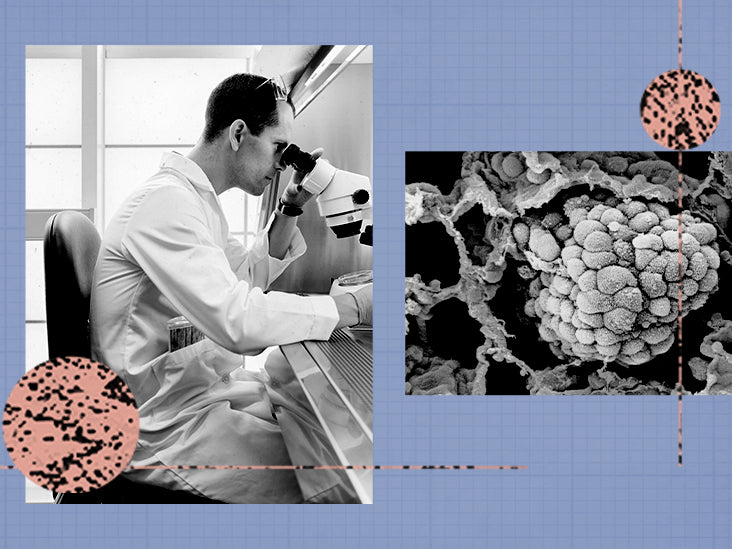
How Cancer Cells Outsmart Their Healthy Counterparts
Decoding the Enigma: How Cancer Cells Outsmart Their Healthy Counterparts
Cancer, the insidious invader, often brings to mind a vicious enemy sneaking into the sanctuary of our body. Like a shapeshifter in a science-fiction tale, it is complex, adaptive, and always one step ahead. But what makes a cancer cell so different from the trillions of cells living peacefully within us? In the early 2000s, a groundbreaking study by Professors Hanahan and Weinberg shed light on this enigma, revealing that cancer cells acquire specific, sinister traits. These traits, termed the hallmarks of cancer, act as a master blueprint guiding cutting-edge cancer research and treatment.
Let's take a journey through these 10 hallmarks, the formidable armory of cancer cells, and explore the weapons scientists and doctors wield to counteract them.
1. Evading Growth Suppressors (Dodging the Body's Traffic Cops)
Imagine traffic cops trying to maintain order on a highway. Similarly, our cells have regulators that inhibit excessive growth. Cancer cells are like rogue drivers that dodge these traffic cops.
- Conventional weapons: Cyclin-Dependent kinase inhibitors, PI3K-AKT-mTOR inhibitors.
- Natural arsenal: Nutraceuticals like Luteolin, EGCG, Honokiol.
2. Sustaining Proliferative Signalling (Perpetual Green Lights)
Imagine a traffic light stuck on green. This is akin to cancer cells that continuously receive signals to grow.
- Conventional weapons: EGFR Inhibitors like Erlotinib and TNFa inhibitors like Infliximab.
- Natural arsenal: EPA/DHA, Ginger, Curcumin, among others.
3. Apoptosis Failure (The Immortal Soldiers)
Apoptosis is the process of programmed cell death. Cancer cells are like soldiers who refuse to fall, continuing to thrive despite signals to self-destruct.
- Conventional weapons: Pro-apoptotic agents like Venetoclax.
- Natural arsenal: Nutraceuticals such as Vitamin A, Resveratrol.
4. Inducing Angiogenesis (Building Supply Lines)
This is the process where cancer cells grow new blood vessels to fuel themselves, akin to an army building supply lines.
- Conventional weapons: VEGF Inhibitors like Avastin.
- Natural arsenal: Nutraceuticals such as Curcumin, Resveratrol.
5. Immortality via Increased Telomerase Activity (The Cellular Fountain of Youth)
Telomerase helps cancer cells to maintain the ends of their chromosomes, granting them immortality.
- Conventional weapons: Telomerase inhibitors.
- Natural arsenal: EGCG, Perilla, Curcumin.
6. Metastatic Potential via Epithelial-Mesenchymal Transition (EMT) (The Shape-shifters)
Metastasis is like a covert spy changing disguises, as cancer cells morph and spread to different parts of the body.
- Conventional weapons: HGF/c-Met inhibitors.
- Natural arsenal: Vitamin D, Ashwagandha, Modified Citrus Pectin.
7. Sustained, Chronic Inflammation (Fuel to the Flames)
Cancer cells can maintain a state of chronic inflammation, like adding fuel to a fire.
- Conventional weapons: COX 2 inhibitors, steroids.
- Natural arsenal: Curcumin, Resveratrol, Berberine.
8. Deregulating Cellular Energetics (Metabolic Alchemy)
Cancer cells can alter their metabolism to produce energy more efficiently.
- Conventional weapons: Metformin, Trametinib.
- Natural arsenal: Rhodiola, CoQ10, Curcumin.
9. Genetic Instability (The Unpredictable Adversary)
Cancer cells are like chameleons, constantly changing their genetic makeup.
- Conventional weapons: PARP inhibitors like Olaparib.
- Natural arsenal: Nutraceuticals like Niacinamide, Melatonin, Curcumin.
10. Breakdown & Evasion of Immune Surveillance (The Stealthy Ninjas)
Like stealthy ninjas, cancer cells can become invisible to the immune system.
- Conventional weapons: Immune Activating mAb, Anti-thrombotics.
- Natural arsenal: Proteolytic enzymes, Vitamin D, Ginsenoside.
Understanding these hallmarks is crucial in comprehending the sheer complexity of cancer. It emphasises why we need a diverse and adaptive strategy, combining conventional treatments with natural remedies, to corner and combat this shapeshifting adversary.
References:
-
Hanahan, D., & Weinberg, R. A. (2011). Hallmarks of cancer: the next generation. Cell, 144(5), 646-674.
-
National Cancer Institute. (n.d.). Targeted Cancer Therapies.
-
Pizzorno, J. E. (2014). Integrative Medicine and Systemic Inflammation. Integrative Medicine: A Clinician's Journal, 13(3), 8-14.
-
Bray, F., Ferlay, J., Soerjomataram, I., Siegel, R. L., Torre, L. A., & Jemal, A. (2018). Global cancer statistics 2018: GLOBOCAN estimates of incidence and mortality worldwide for 36 cancers in 185 countries. CA: a cancer journal for clinicians, 68(6), 394-424.
-
Shukla, S., & Gupta, S. (2010). Apigenin: a promising molecule for cancer prevention. Pharmaceutical research, 27(6), 962-978.
-
Rajendran, P., Ho, E., Williams, D. E., & Dashwood, R. H. (2011). Dietary phytochemicals, HDAC inhibition, and DNA damage/repair defects in cancer cells. Clinical Epigenetics, 3(1), 4.
-
Li, Y., & Tollefsbol, T. O. (2010). Impact on DNA methylation in cancer prevention and therapy by bioactive dietary components. Current Medicinal Chemistry, 17(20), 2141-2151.
-
National Center for Complementary and Integrative Health. (2016). Antioxidants: In Depth.
Please remember to always work with a qualified health care practitioner when combining supplementation alongside conventional therapies to avoid interactions. Ensure your primary healthcare provider is aware of the supplements you are taking no matter how obscure they may seem.
(1) https://www.cell.com/fulltext/S0092-8674(00)81683-9?fbclid=IwAR0F_uCcj4O8k6YFd1jNj7K5HXbc3_8sB42NgSE-PcD8Ekg94mOcWpmJWcM